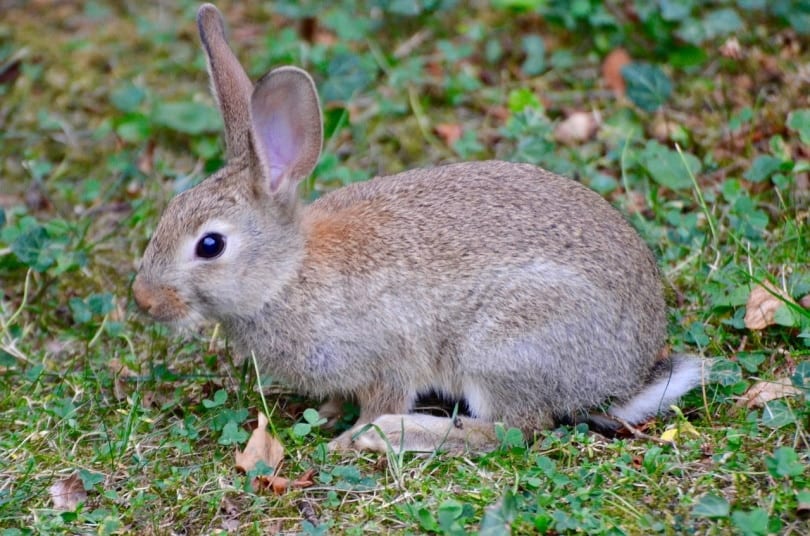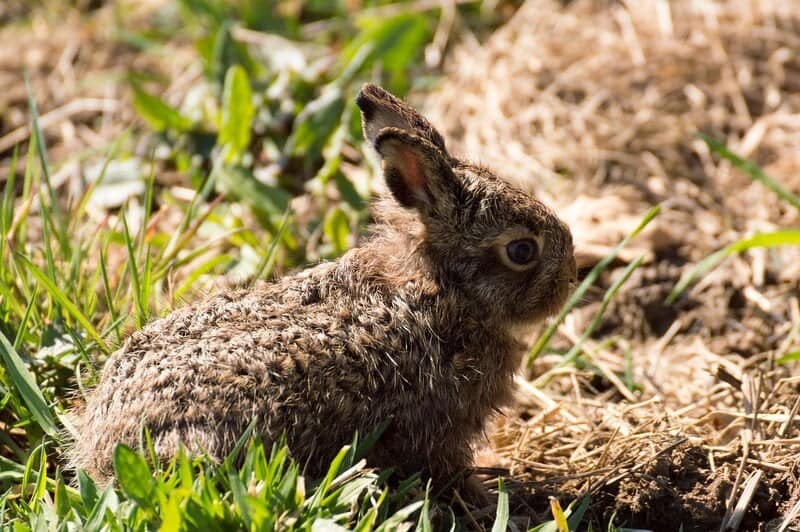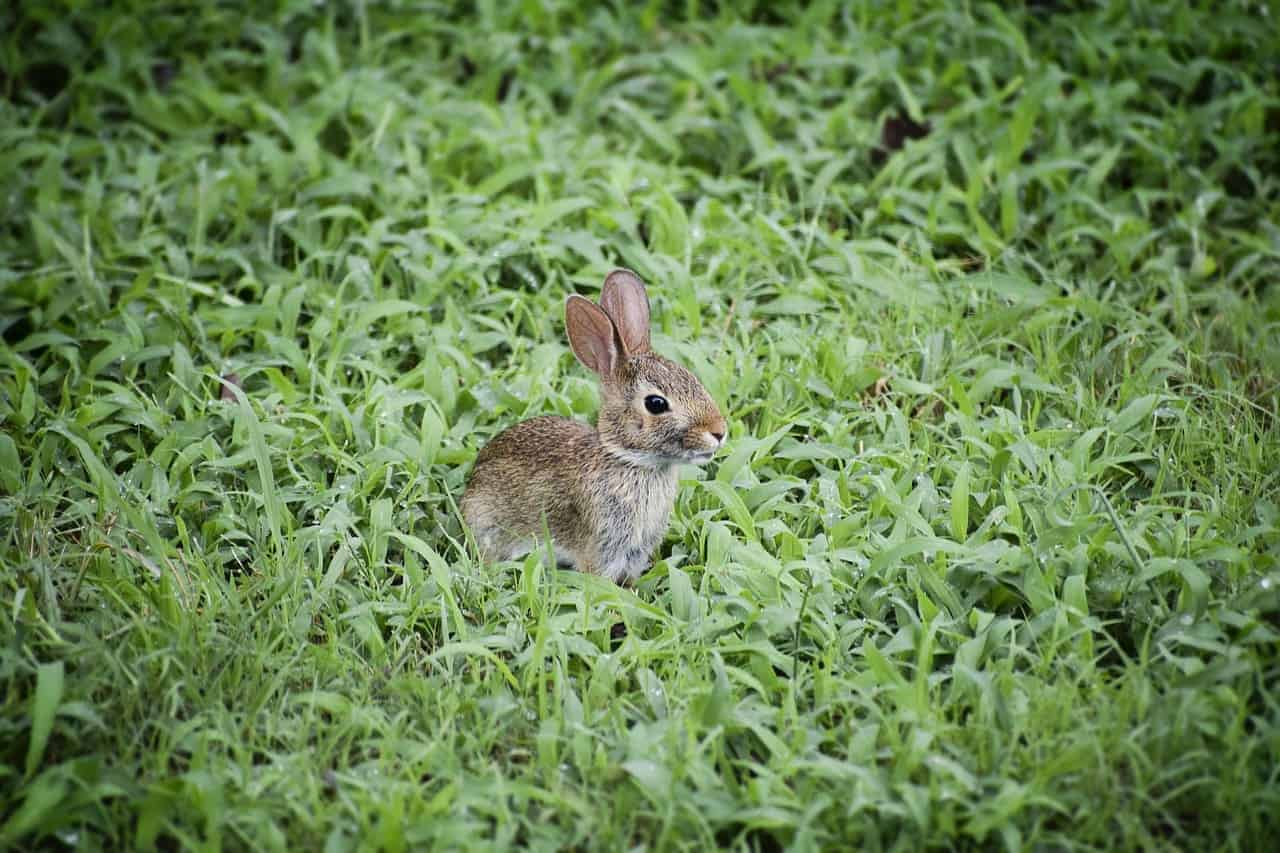Even if you live in a larger city, chances are you’ve come across wild rabbits in your day-to-day life. While the fully-grown ones are completely capable of taking care of themselves, you may be wondering what you can do if you find an adolescent or baby wild rabbit.
Different from domestic breeds, cottontail rabbits are the ones you are most likely to find in the wild. They reproduce quickly and grow to almost full maturity in a short 6 weeks.
Because cottontail mothers have been known to put their nests in some particularly strange places, you may one day find a litter that has been left to fend for themselves from too young an age. In this case, you’ll need a clear guide to determine just how old these wild rabbits are — and what you can do to help.
In this guide, you’ll find everything you need to determine a wild rabbit’s age, as well as how to tell if a mother has abandoned her babies. Then, we’ll cover some basic care tips and resources for making sure the rabbits are safe.
Let’s get started!

Less Than 3 Days Old
Less than 2 inches long, newborn cottontails will have a dark body with an almost transparent belly. They rely on their mother’s milk to survive, and will still have their eyes closed. Do not handle rabbits this small unless you’re absolutely sure their mother has abandoned them (more on this later).
3-9 Days Old
After about 3 days, wild rabbits will begin to develop a more “natural” color of fur that will stick out slightly from their bodies. Though their eyes will remain closed, their ears are beginning to come away from their bodies (but don’t yet allow them to hear). At between 2 and 3 inches long, they are still completely dependent on their mother’s milk to survive.
At around 7 days, the ear canal will open, allowing the baby rabbit to begin to hear. Though their fur is mostly still pressed firmly against their bodies, they are developing enough of a coat to begin to keep themselves warm.
10-14 Days Old
The baby cottontail’s eyes and ears will finally open after nearly a week and a half, allowing them to begin wandering around their nest even without their mothers present. Quickly growing to over 3 inches in length, their fur will take on more of a natural “agouti” color as their true coat comes in. They’ll still be dependent on mother’s milk until the end of 2 weeks but will also begin snacking on hay and dried grasses around the nest.
2-3 Weeks Old
Growing ever more quickly now, the wild rabbit’s fur will fill out and begin to look much fluffier. Upwards of 4 inches long, they will start developing more supportive musculature that allows them to hop around in search of hay, grass, and edible weeds. To do so, they’ll begin to leave the nest in short bursts, but still return to the nest at night.
3-5 Weeks Old
Most noticeable at this age from their ears standing fully erect, wild rabbits will continue to fill out and develop a plush coat of warm, insulating fur. Their searching and alert eyes are becoming trained to the presence of predators, meaning that they can be released back into the wild around this age.
Once they reach a size of 5 to 7 inches long, they’ll look very much like a somewhat smaller version of an adult rabbit. Though often weighing less than a pound at this point, their instincts will begin to keep them safe in the wild as they rely solely on whatever food sources they can forage.
6+ Weeks Old
One and a half months into their lives, wild rabbits are considered to be adults. It may take them another 4 to 6 weeks to fill out into their usual 2-3 pound weights as they grow to be anywhere between 12 and 20 inches long. After the age of 8 weeks, they are fully sexually mature and will often begin to reproduce.

How to Tell If Wild Rabbits Have Been Abandoned
From their fragile birth until adolescence a mere 3 weeks later, wild rabbits need the care of their mother (or a trained professional) to survive. If you’ve found a nest of wild rabbits, and identified them as being less than 3 weeks of age, how can you know whether their mother is still caring for them?
Because rabbit mothers spend much of the day away from their nests foraging for food, you can easily make a mistake in judging that a litter of baby bunnies has been abandoned. Never take babies out of a nest without being absolutely sure that they have been abandoned!
To test for the mother’s presence at night, you can perform a simple check: Place two pieces of very light string in an “X” over the entrance to the nest, and check back in 24 hours. If the string has been moved even a little bit, that means mama has been home to check on and feed her babies. In this case, leave them to be nourished and grow.

What Should I Do If the Babies Are Abandoned?
If the worst-case scenario turns out to be true, and the rabbits’ mother hasn’t returned to the nest in 24 hours, your intervention should be swift. Call your local veterinary office immediately — they’ll either be able to help guide you through the process or refer you to a rehabilitator who can.
Either way, do not attempt to feed the babies! Doing so can be harmful or fatal because they need a very particular set of nutrients from their mother’s milk. Do your best to keep them warm with soft bedding and dried grasses while you wait for further instructions from a professional.

Conclusion
Wild rabbits reproduce and grow incredibly fast, making it very likely that you’ll one day encounter a nest of babies. If you’re concerned about the health and well-being of these small creatures, follow the steps in this guide to determine whether they need your help.
Thank you to our friends at Wild Rescue Texas for their helpful guide to wild rabbits which was instrumental in researching this article.
See also: When Is the Best Age to Breed Rabbits? Females vs Males
Featured Image Credit: Gary Bendig, Unsplash
